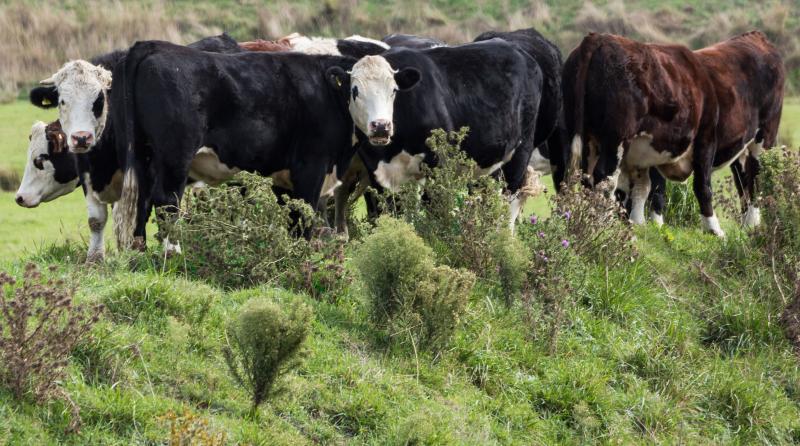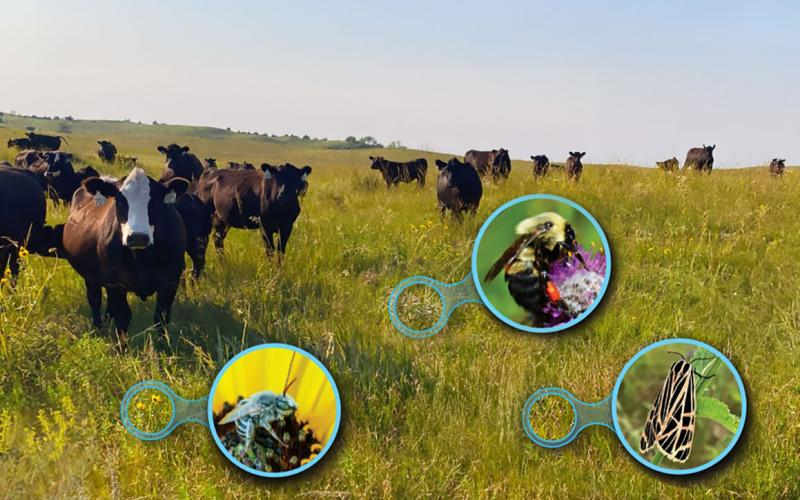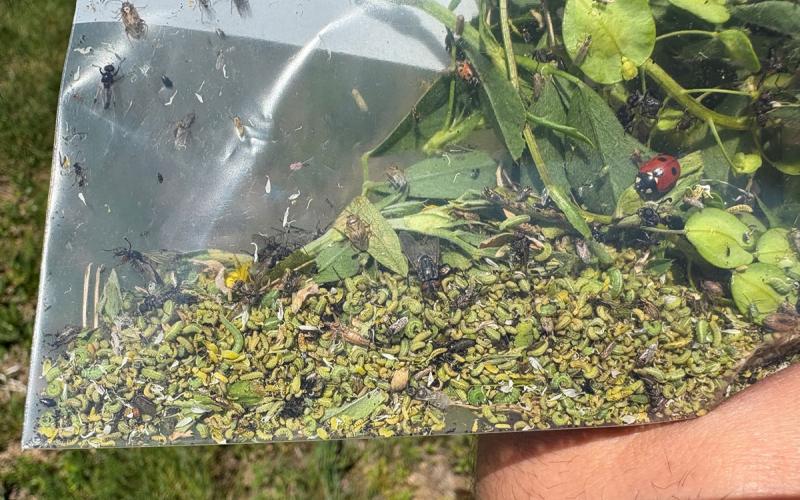Originally written by Gared Shaffer, former SDSU Extension Weeds Field Specialist.

The term ‘weed’ can be broadly applied to any plant that is undesirable at any given time and place based on certain criteria. It is important to understand that the word ‘weed’ has become a general term with no universal definition, and many plants are considered to be weeds, depending on location. For example, a corn plant in a soybean field is considered a weed although both plants are major field crops. This becomes problematic especially in pasture management because producers can be misled regarding what is considered a weed and what the control measures may be. These options could include clipping and cutting, prescribed fire, biological control with insects and the use of livestock.
Alternative Control Options
Clipping and Cutting
Clipping weeds with a mower at the early stages of flowering can suppress weeds and stop weed seed production. Repeat clipping may be necessary throughout the growing season. Cutting the weeds down by hand using a machete can be a precise way to spot control pasture weeds.
Prescribed Fire Use
Prescribed fire can bring many benefits to the grassland ecosystem by reducing unwanted species on the landscape. Further it gives new opportunities to desirable species of native grass and broadleaf species that increase the nutrient dense feed sources for livestock.
Biological Control with Insects
Insects can suppress and possibly control certain weeds in the state. Biocontrol introduces natural predators to prey on the unwanted plants.
Livestock
It is commonly perceived that cattle, sheep and goats prefer primarily grass species and that only grass should dominate the pasture, leading to a conclusion that if a plant is not a grass, it is a weed and has no value to livestock production. This simplified approach can result in a broad-scale application of herbicides to control broadleaf plants in pastures. Producers should consult a variety of resources in order to assess whether a plant is truly a weed or whether it has some intrinsic value to the system or to livestock diets.
Kathy Voth is a leading expert in an emerging science of managing weeds with livestock. In her book Cows Eat Weeds, Voth (2010) outlines simple methods that any producer can implement to train cattle to eat a variety of weed species. With her simple techniques, she describes how cattle can be trained to forage a variety of weeds previously thought to be non-palatable. By utilizing grazing as a means of weed control, producers have the potential to decrease input expenses while reaping the benefits of inexpensive weed control through animal nutrition.
Information on the palatability of individual species can be difficult to find and may often be contradictory. Location, time of year and time of day can influence a plant’s relative nutritional (or toxic) value. The relationship between toxins and nutrients in ruminant animals is complex, and in many cases, livestock can successfully mix their own diets as long as enough variety is available (Kathy Voth pers.com). For a list of species that have been found palatable and good for cattle please visit the Cows Eat Weeds article.


